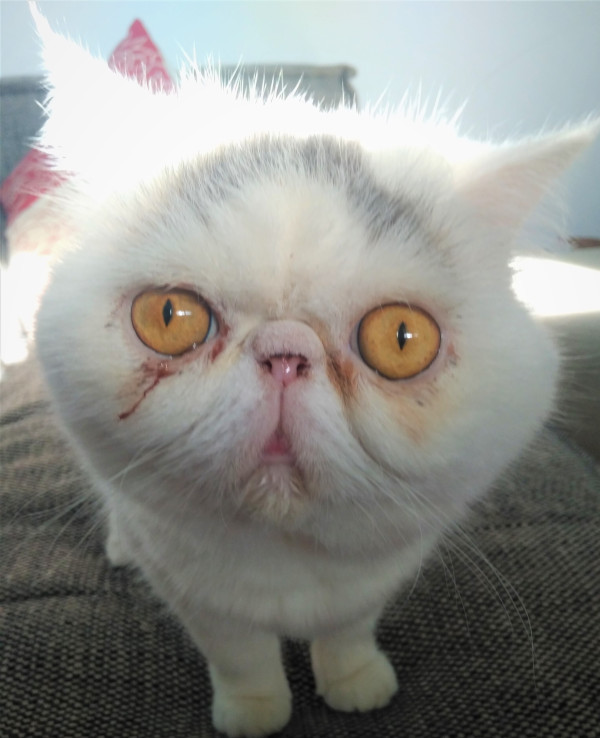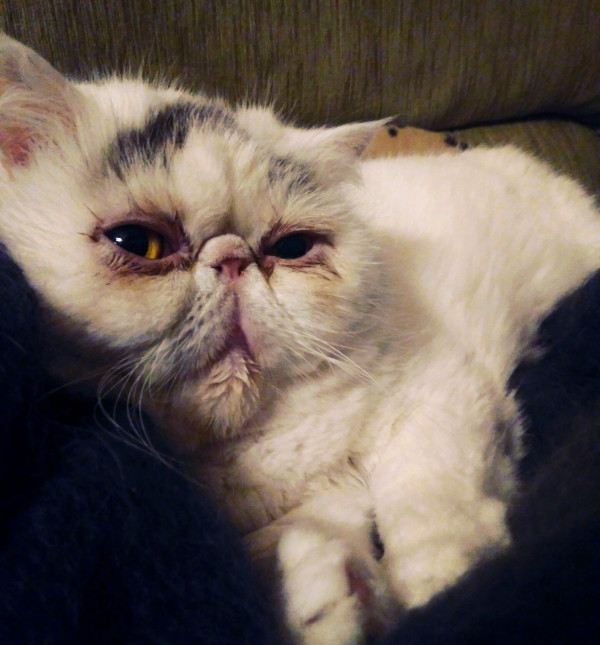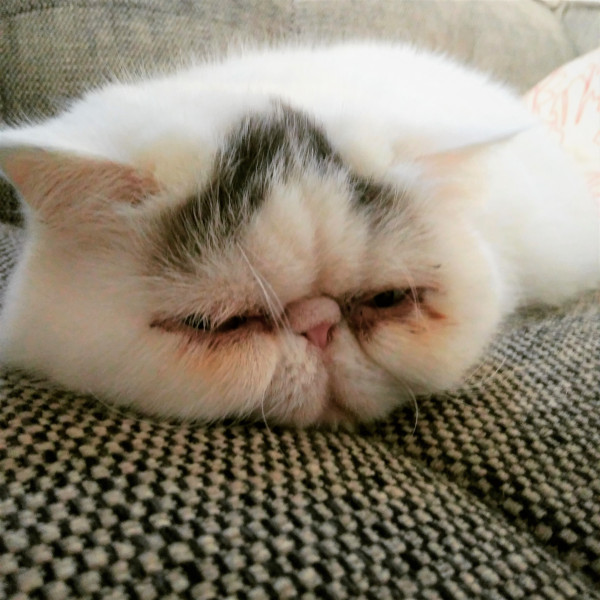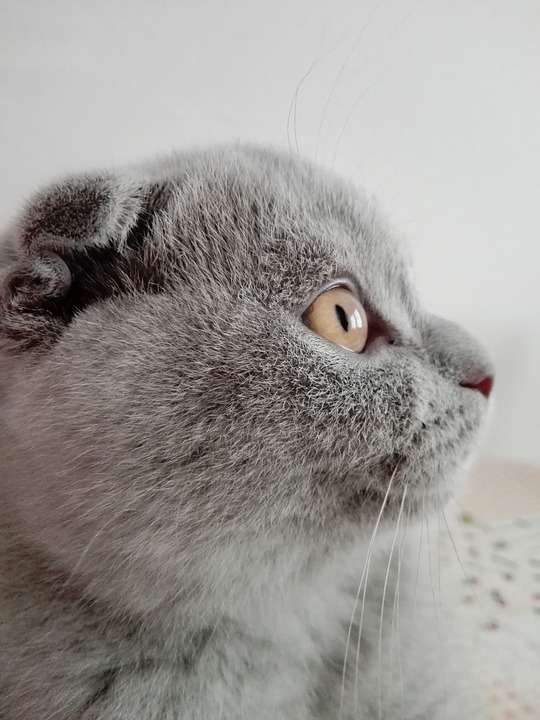What are the health and welfare issues associated with exaggerated physical features in cats?

There is increasing evidence showing that cats who have been bred to have exaggerated physical features (such as flat faces) suffer from significant health problems that lead to lifelong suffering. Some of these health problems include difficulty breathing, eye and skin problems, dental problems and trouble eating.
The RSPCA is opposed to the selective breeding of companion animals which produces physical changes such as exaggerated features or behavioural changes detrimental to the animals’ health or welfare.
Which breeds are affected?
The main cat breeds in Australia that suffer from significant welfare problems and/or are prohibited from being bred in at least one Australian jurisdiction due to heritable defects associated with exaggerated physical features are flat-faced or brachycephalic cats (for example, Persians and Exotic Shorthairs), and Manx, Munchkin, and Scottish Fold cats [1]. The physical appearance of these breeds may be appealing to many people making them very popular. However, most owners or potential owners are unaware of the significant risks posed by some of the specific characteristics of these breeds.

Jimmy Choo is a rescued breeding Persian cat with health problems typical of flat-faced or brachycephalic cats.
What are the health and welfare problems for these cats?
Brachycephalic cats (e.g. Persians and Exotic Shorthairs)
Flat-faced or brachycephalic cats have changes to their respiratory tract similar to those in brachycephalic dogs. These include narrowed nostrils and airways, a longer than normal soft palate (at the back of the throat), which increases the resistance to air flow through the cat’s airways and make it more difficult to breathe compared to a cat with a normal face [1-3]. The breathing difficulties associated with the exaggerated flat face can also lead to exercise intolerance in these cats, meaning they tire easily and can only run and play for short periods — or not at all — because they cannot breathe normally.

Like many brachycephalic cats, Jimmy tires easily and so can only exercise and play for short periods due to the breathing restrictions caused by his extremely flattened face and other airway abnormalities.
Brachycephalic cats also often have abnormalities of their tear ducts and drainage system [3, 5]. This hinders normal tear drainage and can result in excessive watering of the eyes, inflammation of the eye and other eye problems (such as conjunctivitis).

Like many brachycephalic cats, Jimmy has weepy eyes and frequent episodes of uncomfortable conjunctivitis.
The skull abnormalities associated with being brachycephalic (where the skull is an abnormal size and shape) can also cause abnormalities of the teeth [3]. Affected cats can have dental problems throughout their lives and trouble eating.
Manx cats
Manx cats have a genetic abnormality that results in a short or non-existent tail (known as sacrocaudal dysgenesis) which is the signature feature of the cat breed. However, this can cause numerous associated problems including digestive tract problems that can lead to constipation and faecal incontinence, rectal prolapse, defects of the urinary tract, urinary incontinence and spina bifida [1].
Munchkin cats
Munchkin cats have a genetic mutation causing disproportionate dwarfism (chondrodysplasia – a defect in the formation of cartilage) which results in affected cats having abnormally shortened limbs; this is the signature feature of the cat breed. Affected cats cannot be bred in Victoria under The Prevention of Cruelty to Animals Act 1986 – Code of Practice for the Breeding of Animals with Heritable Defects that Cause Disease.
The physical changes typical of Munchkin cats have the potential to cause adverse effects on the animal’s health and welfare (for example, restrictions of the cat’s mobility and, therefore, expression of natural behaviours, and abnormal limb development, which could have detrimental impacts on the joints).
Inherited cartilage defect in Scottish Folds (also known as Scottish Fold disease or Osteochondrodysplasia)

Scottish Fold cat.
The ear fold typical of the Scottish Fold cat is the result of a natural genetic mutation (the TRPV4 variant gene) causing a defect in the formation of cartilage, which would normally retain the ears in a normal shape [4, 5]. This inherited cartilage defect (also known as Scottish Fold Osteochondrodysplasia or Scottish Fold disease) causes other deformities throughout the body and is a dominant trait, meaning all kittens with the TRPV4 variant gene will be affected.
Scottish Fold Osteochondrodysplasia causes serious abnormalities in joints and bone growth which lead to arthritis (painful, swollen joints), short, abnormally thick, and inflexible tails, spinal abnormalities and short, stiff legs [4-6].
The welfare impacts of Scottish Fold Osteochondrodysplasia can be severe in terms of pain and inability to perform natural behaviours, as these cats can be lame, walk with an abnormal gait, can be reluctant to engage in normal movements such as walking or jumping, and can even become completely crippled. There is no cure for this progressive condition.
All kittens born to two Scottish Fold parents with two copies of the gene variant will be affected by Scottish Fold Osteochondrodysplasia. Half of the kittens in a litter from a cross between a Scottish Fold and another breed or two Scottish Folds who have just one copy of the gene variant each will be affected with Scottish Fold Osteochondrodysplasia to some degree [4, 5].
Since the only ‘benefit’ of having the TRPV4 variant gene is the folded ear look that some people find appealing, the RSPCA does not support breeding Scottish Fold cats, including breeding a Scottish Fold with a cat without folded ears given the risk of at least some kittens being affected even in litters from mixed parents.
Affected Scottish Fold cats cannot be bred in Victoria under The Prevention of Cruelty to Animals Act 1986 – Code of Practice for the Breeding of Animals with Heritable Defects that Cause Disease.
What can owners of cats with exaggerated features do to address the welfare issues associated with their pets?
Cats with exaggerated features may require specialised veterinary care to help them to be more comfortable and to improve their quality of life. These cats may also need ongoing extra daily care from their owners in addition to general care needs. It is very hard to predict the level of care which may be required for a cat with exaggerated features. Potential owners who have busy lifestyles or limited incomes should carefully consider their capacity to provide adequate care should this be required.
If you own a cat with exaggerated features, you can help your pet in a number of ways:
- Be fully aware of the specific health and welfare problems for the breed of cat.
- Talk to your veterinarian about what you need to be aware of and what you can do to help your cat.
- If your cat has exaggerated features causing welfare problems, you can help ensure these are not passed on to future generations by getting your cat desexed. Cats’ health and welfare should be considered as a priority over appearance in making breeding decisions.
References
Gunn-Moore et al (2008) Breed-related disorders of cats. Journal of Small Animal Practice 49(4):167-8
Farnworth MJ et al (2016) Flat feline faces: Is brachycephaly associated with respiratory abnormalities in the domestic cat (Felis catus)? PLoS One 11(8):e0161777
O’Neill DG, Romans C, Brodbelt DC et al (2019) Persian cats under first opinion veterinary care in the UK: demography, mortality and disorders. Science Reports 9(1):12952
Takanosu M, Takanosu T, Suzuki H, Suzuki K (2008) Incomplete dominant osteochondrodysplasia in heterozygous Scottish Fold cats: Case Report. Journal of Small Animal Practice 49(4):197-199
Rorden C, Griswold MC, Moses N, Berry CR, Keller GG, Rivas R, Flores-Smith H, Shaffer LG, Malik R (2021) Radiographical Survey of Osteochondrodysplasia in Scottish Fold Cats caused by the TRPV4 gene variant. Hum Genet 140(11):1525-1534
Malik R, Allan GS, Howlett CR, Thompson DE, James F, McWhirter C, Kendall K (1999) Osteochondrodysplasia in Scottish Fold cats. Aust Vet J 77(2):85-92
Was this article helpful?
This work is licensed under a Creative Commons Attribution-NonCommercial-NoDerivatives 4.0 International License.


